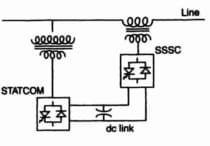 |
| HVDC/HVE |
1. Paschen's law is associated with_______.
a. breakdown voltage
b. ionization
c. thermal radiations
d. none of the above
2. The essential condition for the Paschen's law to be valid is that_________.
a. voltage must be dc
b. voltage must be ac
c. temperature must be constant
d. humidity must be low
3. The breakdown voltage in gases depends on________.
a. distance between the electrodes
b. relative air density
c. humidity
d. all of the above
4. At unvarying temperature, breakdown voltage in a uniform field is a function of the product of gas pressure and distance between the electrodes. The above statement is known as_______.
a. Electron avalanche
b. Thermal stability principle
c. Paschen's law
d. Breakdown voltage law
5. In 'plasma' state a gas_________.
a. loses electrical conductivity
b. conducts electricity
c. becomes perfect insulator
d. attracts moisture
6. According to Paschen’s law, the breakdown voltage = __________.
a. F (p/d)
b. F / (pd)
c. F (pd)
d. F + p + d
7. Paschen law relates the breakdown voltage with pressure and electrode separation. For a particular gas, the correct relationship as per Paschen’s law is_________.
a. Breakdown voltage is directly proportional to pressure and inversely to separation
b. Breakdown voltage is directly proportional to separation and inversely to pressure
c. Breakdown voltage is inversely proportional to both
d. Breakdown voltage is directly proportional to both
8. The gas which is employed as insulating material________.
a. Oxygen
b. Sulphur Hexafluoride
c. Tetra fluoromethane
d. Ethylamine
9. The relative dielectric strength of SF6 as compared to air is_________.
a. 1.5 times
b. 2 times
c. 2.5 times
d. 3 times
10. The correct statement about Paschen’s law states that breakdown voltage of a uniform gap is directly proportional to_______.
a. Pressure of the gas
b. Separation of electrode
c. Material of electrode
d. All of these
11. Townsend avalanche is a gas ionisation process where free electrons are accelerated by an electric field, collide with gas molecules, and consequently free additional electrons.
a. True
b. False
12. The Townsend mechanism explains the phenomenon of breakdown_____.
a. Only at low pressure
b. Only at high pressure
c. Only at very high pressure
d. Only bat very low pressure
13.Formative time lag depends on the mechanism of the avalanche growth in gap. The formative time lag is usually_______.
a. Much shorter than the statistical time lag
b. Much greater than the statistical time lag
c. Equal to the statistical time lag
d. None of these
14. The statistical time lag depends upon the_______.
a. Size of gap
b. Quantity of radiation that produces the primary electrons
c. Amount of pre-ionization preset gap
d. All of these
15. According to Paschen's curve at standard pressure, the breakdown voltage reduces with the gap length up to a point_______.
a. True
b. False
16. The corona discharge on transmission lines may be avoided by________.
a. Increasing effective conductor radius
b. Increasing the operating voltage
c. Decreasing the spacing between the conductors
d. None of these
17. Higher the frequency, _____________.
a. Lower the corona loss.
b. Higher is the corona loss
c. Does not effect
d. Depends on the physical conditions
18. For operating power frequency voltages, a surge arrester has to be a_______.
a. Conductor
b. Non-conductor
c. Semiconductor
d. None of these
19. Surge diverters are_______.
a. non-linear resistors in series with spark gaps which act as fast switches
b. arc quenching devices
c. shunt reactors to limit the voltage rise due to Ferranti effect
d. over-voltages of power frequency harmonics.
20. The switching surge can be best explained as_______.
a. D.C in nature
b. A.C in nature
c. Very long duration transient voltage
d. Short duration transient voltage





0 Comments
If you have any doubt, feel free to ask.